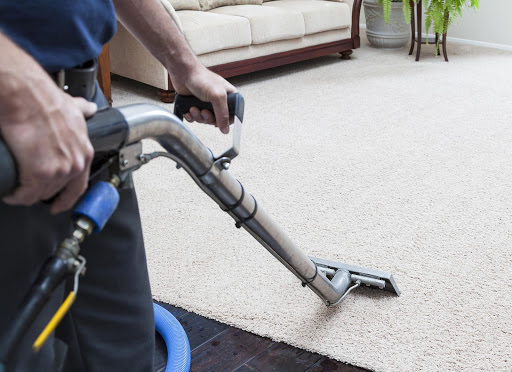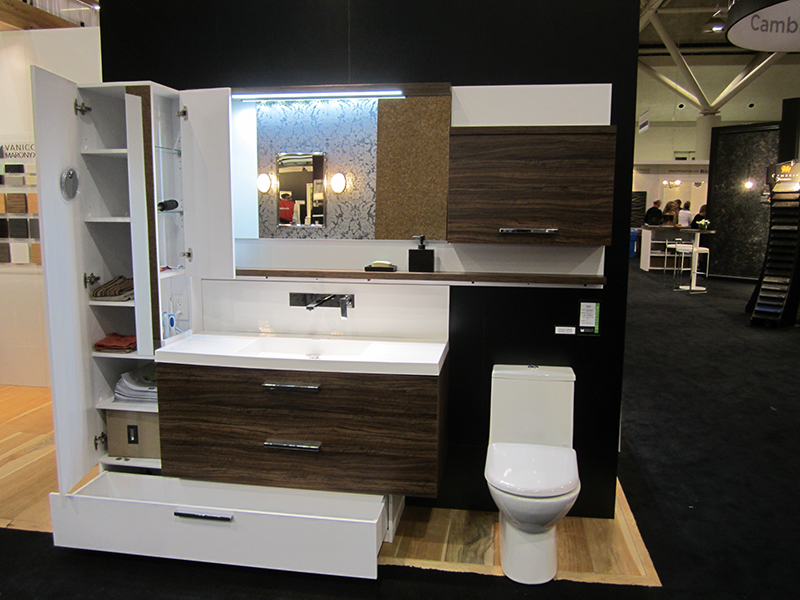If you're looking for a unique and durable option for your bathroom vanity, consider installing a concrete one. Not only does it add a modern touch to your bathroom, but it's also a long-lasting and low-maintenance choice. However, installing a concrete bathroom vanity may seem like a daunting task, but with the right tools and knowledge, it can be a relatively straightforward DIY project. In this article, we will guide you through the process of installing a concrete bathroom vanity step-by-step.How to Install a Concrete Bathroom Vanity
Before you start the installation process, it's important to have all the necessary tools and materials ready. You will need a drill, screws, level, measuring tape, saw, and a silicone adhesive. You will also need to have your concrete vanity top and cabinet, as well as any plumbing fixtures, ready to be installed. Step 1: Measure the space where you want to install the vanity. Make sure to take into account the size of the vanity top and cabinet, as well as the space needed for plumbing fixtures. Step 2: Place the vanity cabinet in the desired location and use a level to ensure that it is straight. If the cabinet is not level, use shims to adjust it. Step 3: Attach the vanity cabinet to the wall using a drill and screws. Make sure to secure it firmly to the wall. Step 4: If your vanity top does not come pre-drilled for plumbing fixtures, use a saw to create holes for the faucet and drain. Step 5: Apply a silicone adhesive to the top of the vanity cabinet and carefully place the concrete vanity top on it. Use a level to make sure it is flat. Step 6: Connect the plumbing fixtures to the vanity top. Make sure to follow the manufacturer's instructions. Step 7: Seal the edges of the vanity top with a silicone caulk to prevent water from seeping in.Step-by-Step Guide for Installing a Concrete Bathroom Vanity
Installing a concrete bathroom vanity can be a fun and rewarding DIY project. However, it's important to keep safety in mind while working with heavy materials like concrete. Make sure to wear protective gear, such as gloves and goggles, and have someone to help you with lifting and positioning the vanity top.DIY Concrete Bathroom Vanity Installation
Concrete is a heavy material and may require more than one person to lift and maneuver. If your concrete vanity top is too heavy for you to handle, consider hiring a professional to help with the installation. If you choose to do it yourself, make sure to follow proper lifting techniques and use a dolly or other equipment to move the vanity top safely.Concrete Bathroom Vanity Too Heavy? Here's How to Install It Safely
To successfully install a concrete bathroom vanity, you will need the following tools and materials:Tools and Materials Needed for Installing a Concrete Bathroom Vanity
Here are a few tips to keep in mind while installing a concrete bathroom vanity:Tips for Installing a Concrete Bathroom Vanity Too
While installing a concrete bathroom vanity may seem like a straightforward task, there are a few common mistakes that can be easily avoided:Common Mistakes to Avoid When Installing a Concrete Bathroom Vanity
Leveling and securing a concrete bathroom vanity is an important step in the installation process. Use a level to ensure that the vanity cabinet is straight before attaching it to the wall. If needed, use shims to adjust the level. When securing the vanity top to the cabinet, make sure to use a strong and durable adhesive, such as a silicone adhesive, to ensure it stays in place.How to Level and Secure a Concrete Bathroom Vanity
A floating concrete bathroom vanity is a popular choice for modern bathrooms. To install a floating vanity, follow the same steps as above, but instead of attaching the vanity cabinet to the wall, use a strong adhesive to secure it to the wall. Make sure to follow the manufacturer's instructions and use proper safety precautions when working with heavy materials.Installing a Floating Concrete Bathroom Vanity Too
While installing a concrete bathroom vanity can be a satisfying DIY project, it's important to assess your skills and abilities before taking on the task. If you have experience with similar projects and feel confident in your abilities, then DIY may be the best option for you. However, if you're unsure or feel overwhelmed, it's always best to hire a professional to ensure a safe and successful installation. In conclusion, installing a concrete bathroom vanity can be a great way to add style and durability to your bathroom. With the right tools, materials, and knowledge, it can be a straightforward DIY project. However, if you're not confident in your abilities, it's always best to seek professional help. Follow these steps and tips for a successful and long-lasting concrete bathroom vanity installation. Professional vs. DIY: Which is the Best Way to Install a Concrete Bathroom Vanity?
The Benefits of Installing a Concrete Bathroom Vanity

Enhance Your Bathroom Design
 When it comes to designing your bathroom, the vanity is often the centerpiece of the space. It not only serves as a functional storage and grooming area, but it also sets the tone for the overall design aesthetic.
Installing a concrete bathroom vanity can add a touch of elegance and modernity to your bathroom design.
With its sleek and smooth surface, concrete can give your bathroom a contemporary and sophisticated look.
The versatility of concrete also allows for customization in terms of size, shape, and color, ensuring that your vanity fits seamlessly into your bathroom design.
When it comes to designing your bathroom, the vanity is often the centerpiece of the space. It not only serves as a functional storage and grooming area, but it also sets the tone for the overall design aesthetic.
Installing a concrete bathroom vanity can add a touch of elegance and modernity to your bathroom design.
With its sleek and smooth surface, concrete can give your bathroom a contemporary and sophisticated look.
The versatility of concrete also allows for customization in terms of size, shape, and color, ensuring that your vanity fits seamlessly into your bathroom design.
Durable and Long-Lasting
 Bathrooms are high-traffic areas, prone to moisture and constant use. This is why durability is an essential factor when choosing materials for your bathroom vanity.
Concrete is known for its strength and durability, making it a perfect choice for a bathroom vanity that can withstand the daily wear and tear.
Unlike other materials, concrete does not easily chip, scratch, or stain, making it a low-maintenance option for your bathroom.
A concrete vanity can last for many years with minimal upkeep, making it a cost-effective investment in the long run.
Bathrooms are high-traffic areas, prone to moisture and constant use. This is why durability is an essential factor when choosing materials for your bathroom vanity.
Concrete is known for its strength and durability, making it a perfect choice for a bathroom vanity that can withstand the daily wear and tear.
Unlike other materials, concrete does not easily chip, scratch, or stain, making it a low-maintenance option for your bathroom.
A concrete vanity can last for many years with minimal upkeep, making it a cost-effective investment in the long run.
Customizable and Unique
 One of the main advantages of choosing a concrete bathroom vanity is the ability to customize it to your specific preferences and needs.
You can choose from a variety of colors, finishes, and designs to create a unique and personalized vanity that reflects your style.
Whether you prefer a sleek and modern look or a more rustic and natural feel, concrete can be molded and finished to achieve the desired look.
Concrete can also be combined with other materials such as wood or metal to create a one-of-a-kind vanity that will make a statement in your bathroom.
One of the main advantages of choosing a concrete bathroom vanity is the ability to customize it to your specific preferences and needs.
You can choose from a variety of colors, finishes, and designs to create a unique and personalized vanity that reflects your style.
Whether you prefer a sleek and modern look or a more rustic and natural feel, concrete can be molded and finished to achieve the desired look.
Concrete can also be combined with other materials such as wood or metal to create a one-of-a-kind vanity that will make a statement in your bathroom.
Eco-Friendly Option
 With its increasing popularity in the design world,
concrete has become a popular choice for those looking for eco-friendly and sustainable options for their home.
Concrete is made from natural materials and does not emit any harmful chemicals, making it a safe and environmentally-friendly choice for your bathroom vanity.
Additionally, concrete can be recycled and reused, making it a more sustainable option compared to other materials.
By choosing a concrete bathroom vanity, you can contribute to a greener and more sustainable future.
With its increasing popularity in the design world,
concrete has become a popular choice for those looking for eco-friendly and sustainable options for their home.
Concrete is made from natural materials and does not emit any harmful chemicals, making it a safe and environmentally-friendly choice for your bathroom vanity.
Additionally, concrete can be recycled and reused, making it a more sustainable option compared to other materials.
By choosing a concrete bathroom vanity, you can contribute to a greener and more sustainable future.
In Conclusion
 Installing a concrete bathroom vanity is not only a practical choice, but it also adds a touch of elegance and uniqueness to your bathroom design. Its durability, versatility, and eco-friendliness make it a popular choice among homeowners and designers.
Consider incorporating a concrete vanity into your bathroom design to elevate the overall look and feel of your space.
With its numerous benefits, a concrete vanity is a worthwhile investment that will add value and style to your home.
Installing a concrete bathroom vanity is not only a practical choice, but it also adds a touch of elegance and uniqueness to your bathroom design. Its durability, versatility, and eco-friendliness make it a popular choice among homeowners and designers.
Consider incorporating a concrete vanity into your bathroom design to elevate the overall look and feel of your space.
With its numerous benefits, a concrete vanity is a worthwhile investment that will add value and style to your home.






























































